Historical sites in Turkey are a treasure trove of ancient and modern history. From the grandeur of the Ottoman Empire to the ancient ruins of Ephesus, there is something for everyone interested in history and culture.
One must-visit historical site in Turkey is Topkapi Palace, located in Istanbul. This palace was home to Ottoman sultans for almost 400 years and consists of four courtyards, numerous rooms, and several museums that showcase the opulence and grandeur of the Ottoman Empire. Visitors can see priceless artifacts such as the Topkapi Dagger and Spoonmaker’s Diamond at the famous Imperial Treasury or enjoy stunning views of the Bosphorus Strait from its gardens and terraces.
Another must-see historical site in Istanbul is Hagia Sophia, which has served as a church, mosque, and museum over its long history. The iconic dome structure is awe-inspiring both inside and out, with intricate mosaics and frescoes that tell stories from different eras. Consider also experiencing the rich culture of Istanbul with an Istanbul cruise dinner.
For those looking to explore outside of Istanbul, Ephesus is a must-visit destination. The ancient city was once a bustling port town on the Aegean coast but now stands as one of Turkey’s most significant archaeological sites. Visitors can explore well-preserved ruins such as the Library of Celsus, Great Theater, and the Temple of Artemis, among others.
Cappadocia offers another unique experience with its unusual rock formations known as “fairy chimneys.” The region also has many underground cities that were once used by early Christians to hide from persecution. For a truly unique view of the landscape, consider a Turkey hot air balloon ride.
Turkey’s rich history also includes Troy – made famous by Homer’s epic poem ‘The Iliad’. Located near Canakkale on Turkey’s northwestern coast, visitors can walk through this legendary city’s walls while learning about its fascinating past.
Beyond these historical sites, Turkey also offers a range of relaxing experiences. If you’re traveling as a couple, check out these best places to go on holiday in Turkey for couples, which include recommendations for relaxing at some of Turkey’s top thermal spas.
Based on the information you’ve provided, here is a table structure that can help organize the historical sites in Turkey in a clear and user-friendly manner:
| Historical Site | Location | Description | Unique Features |
|---|---|---|---|
| Topkapi Palace | Istanbul | This palace was home to Ottoman sultans for almost 400 years. | Contains four courtyards, numerous rooms, several museums, and priceless artifacts such as the Topkapi Dagger and Spoonmaker’s Diamond. |
| Hagia Sophia | Istanbul | Served as a church, mosque, and museum over its long history. | The iconic dome structure is awe-inspiring both inside and out, with intricate mosaics and frescoes. |
| Ephesus | Aegean coast | Once a bustling port town, Ephesus is now one of Turkey’s most significant archaeological sites. | Well-preserved ruins such as the Library of Celsus, Great Theater, and the Temple of Artemis. |
| Cappadocia | Central Turkey | Known for its unique rock formations known as “fairy chimneys.” | Features many underground cities used by early Christians to hide from persecution. |
| Troy | Near Canakkale, northwestern coast | The legendary city made famous by Homer’s epic poem ‘The Iliad’. | Visitors can walk through the city’s walls while learning about its fascinating past. |
| Blue Mosque | Istanbul | One of the most popular tourist destinations in Turkey. | Features intricate tiles and a unique blend of Ottoman and Byzantine design elements. |
| Mount Nemrut | Near Adiyaman, southeastern Turkey | UNESCO World Heritage Site featuring the remains of a tomb built by King Antiochus I around 1st century BC. | Massive statues representing various gods and goddesses from Greek and Persian mythology. |
| Hattusa | Near Bogazkale, central Turkey | The capital of the Hittite Empire for over 3000 years. | Remnants of ancient buildings, temples, and fortifications. |
| Mausoleum at Halicarnassus | Bodrum, southwestern Turkey | Once one of the Seven Wonders of the Ancient World. | Some remains can be seen at Bodrum Castle. |
| Roman Baths in Ankara | Ankara | Some of the best-preserved examples of Roman architecture in Turkey. | Visitors can explore various rooms and admire intricate mosaics. |
| Temple Of Artemis In Ephesus | Ephesus | One of the largest temples in the ancient world. | Unfortunately, the temple was destroyed by invading armies over time. |
This table provides a brief overview of each historical site, its location, a short description, and unique features that make each site worth visiting.
List of World Heritage Sites in Turkey
The Blue Mosque in Istanbul: A Must-See Ottoman Architecture
Located in the heart of Istanbul, The Blue Mosque is one of the most popular tourist destinations in Turkey. Built between 1609 and 1616 during the reign of Sultan Ahmet I, the mosque is an architectural masterpiece that features intricate tiles and a unique blend of Ottoman and Byzantine design elements.
The mosque’s nickname comes from its interior decoration, which boasts over 20,000 handmade ceramic tiles in shades of blue. The tiles were created by artisans from Iznik, a town renowned for its ceramics production during the Ottoman period. Visitors can also admire the mosque’s six minarets, which are rare for mosques built during that time.
While visitors are welcome to explore the mosque’s interior on their own, it’s worth considering a guided tour to learn more about its history and significance. In addition to being a place of worship, The Blue Mosque has served as a symbol of Istanbul throughout history.
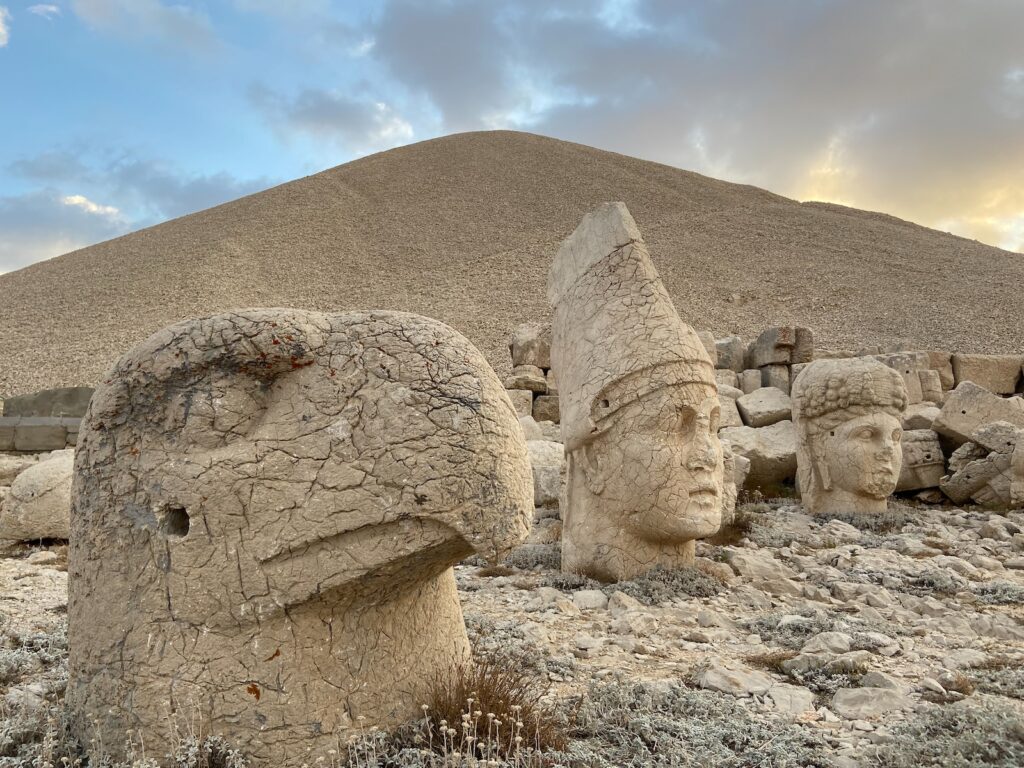

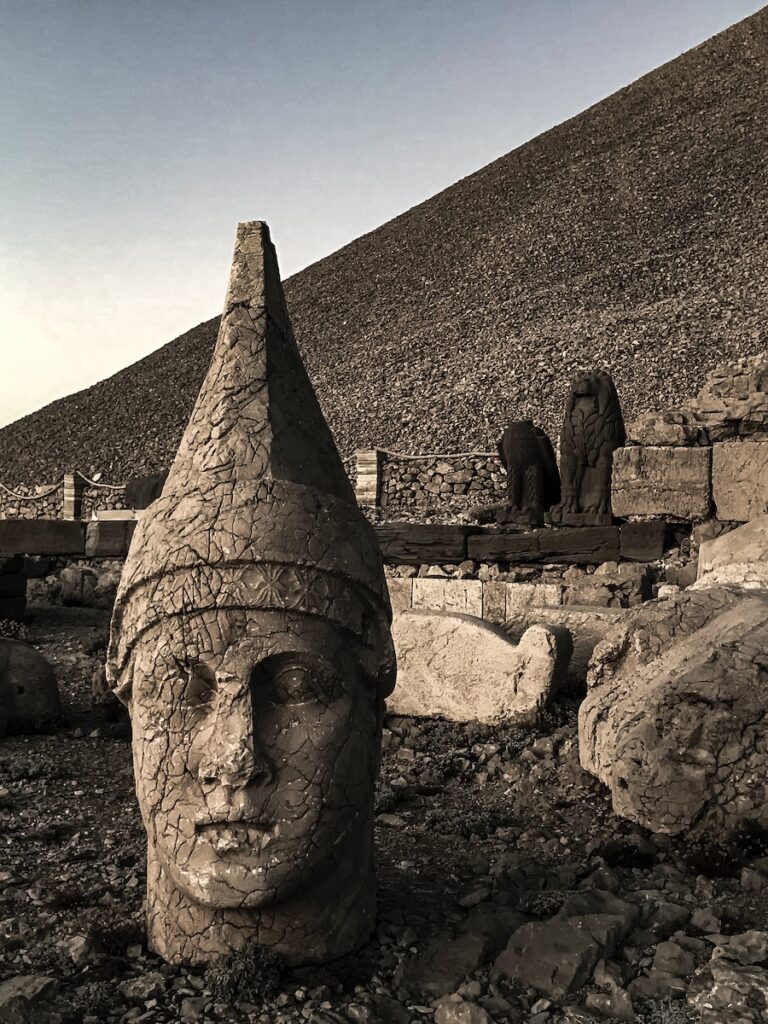
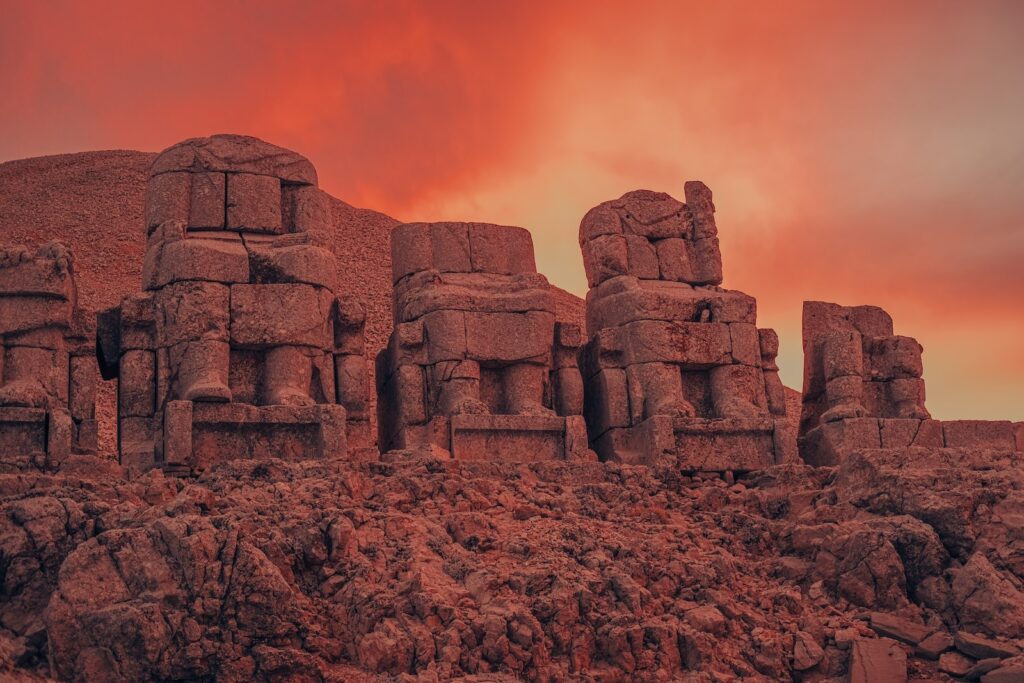
Mount Nemrut: A UNESCO World Heritage Site
Mount Nemrut is another must-see destination for history buffs visiting Turkey. Located in southeastern Turkey near the city of Adiyaman, this UNESCO World Heritage Site features the remains of a tomb built by King Antiochus I around 1st century BC.
The tomb was constructed atop Mount Nemrut and featured massive statues representing various gods and goddesses from Greek and Persian mythology. Over time, earthquakes and other natural disasters caused significant damage to the site. Today, visitors can still see some of these statues as well as remnants of ancient buildings and temples.
Visitors who make the trek up Mount Nemrut will be rewarded with stunning views of the surrounding landscape as well as an up-close look at ancient ruins unlike any other.
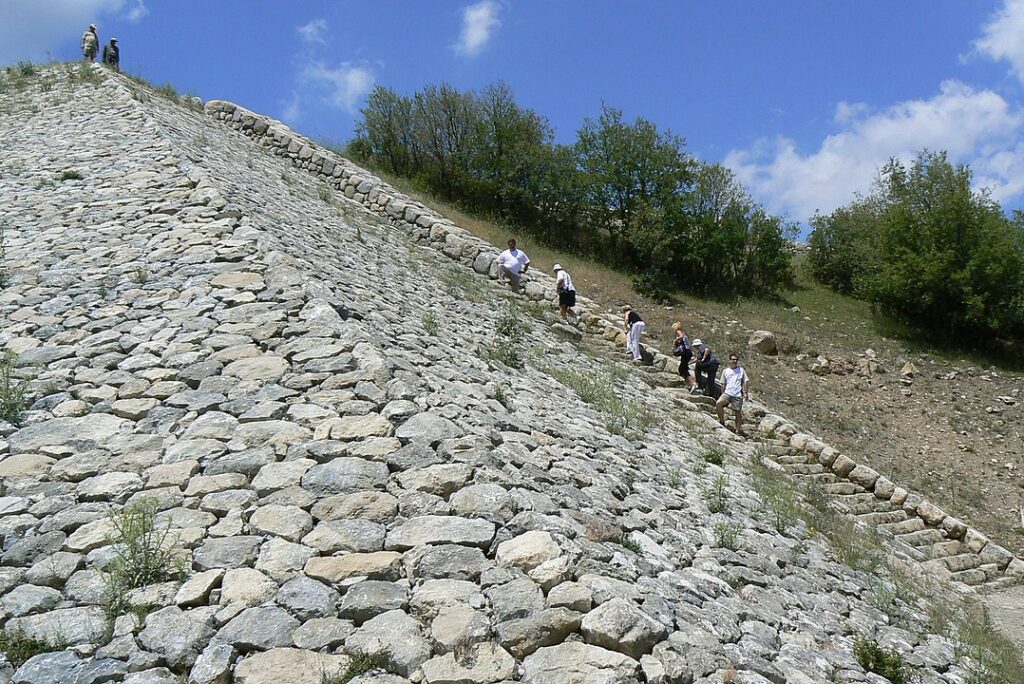
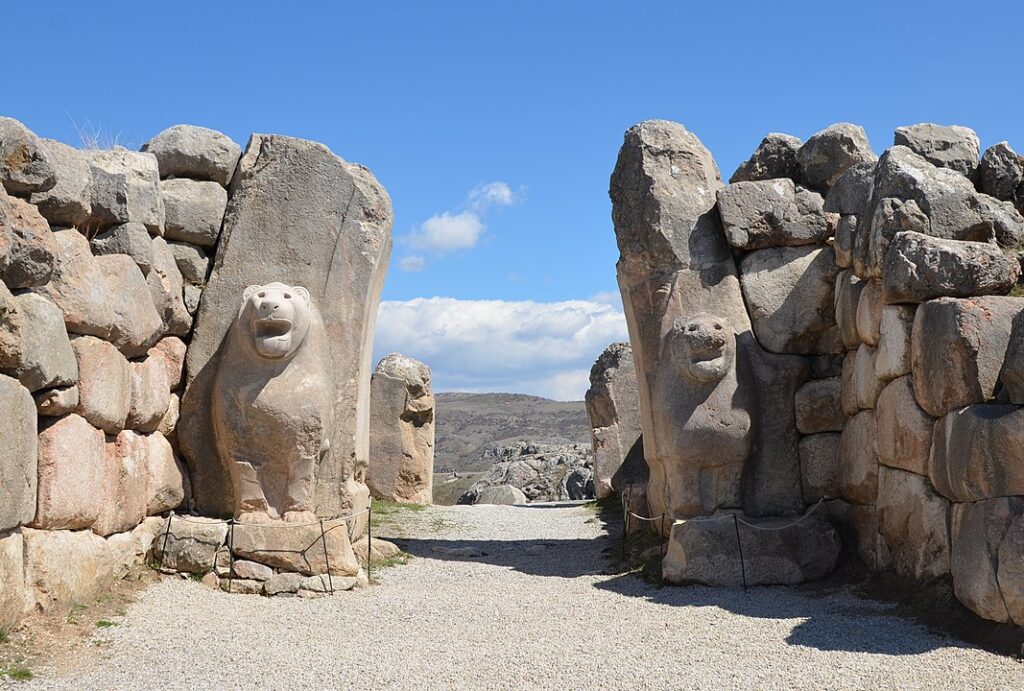
Hattusa: Ancient Capital City
The ancient city of Hattusa was once home to one of history’s greatest empires -the Hittites- which ruled over much of modern-day Turkey and parts of the Middle East during the Bronze Age. Located in central Turkey near the city of Bogazkale, Hattusa was the capital of the Hittite Empire for over 3000 years.
Today, visitors can explore the ruins of this once-great city and see remnants of ancient buildings, temples, and fortifications. Highlights include the Great Temple, which was dedicated to the god Teshub; The Lion Gate, which features two massive stone lions guarding an entrance; and The Royal Palace, which served as a residence for Hittite kings.

The Mausoleum at Halicarnassus: A Wonder of Ancient World
While it no longer stands today, The Mausoleum at Halicarnassus was once one of the Seven Wonders of the Ancient World. Built around 353 BC to honor King Mausolus -the ruler of Caria in southwestern Anatolia- this impressive structure stood over 45 meters tall and featured intricate carvings and sculptures.
Unfortunately, earthquakes caused significant damage to The Mausoleum over time. Today, visitors can still see some remains from this once-great structure at Bodrum Castle in southwestern Turkey.
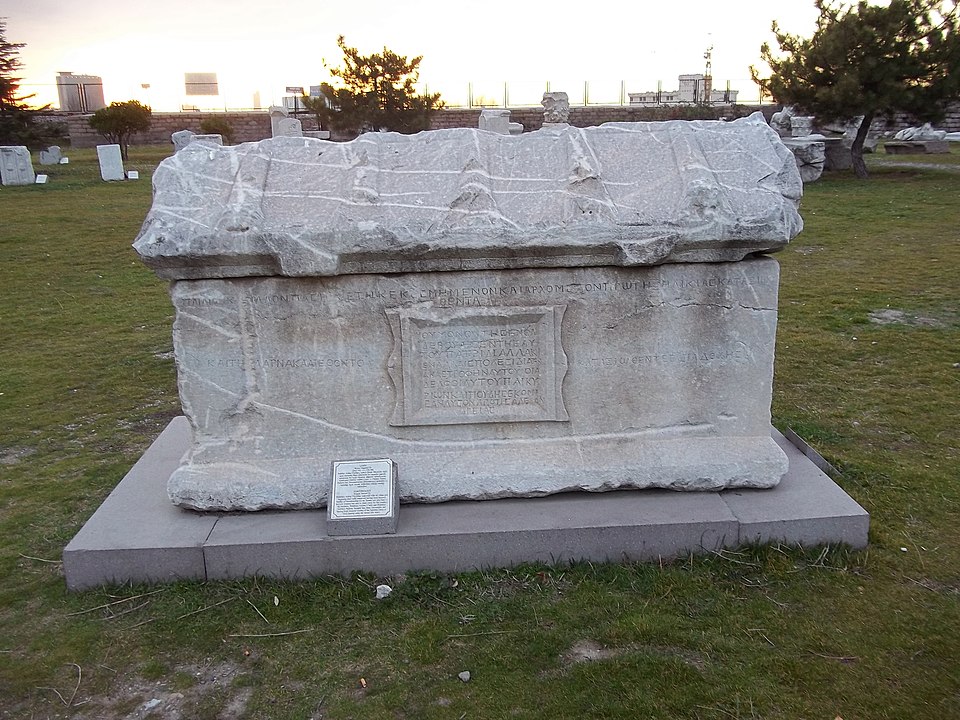
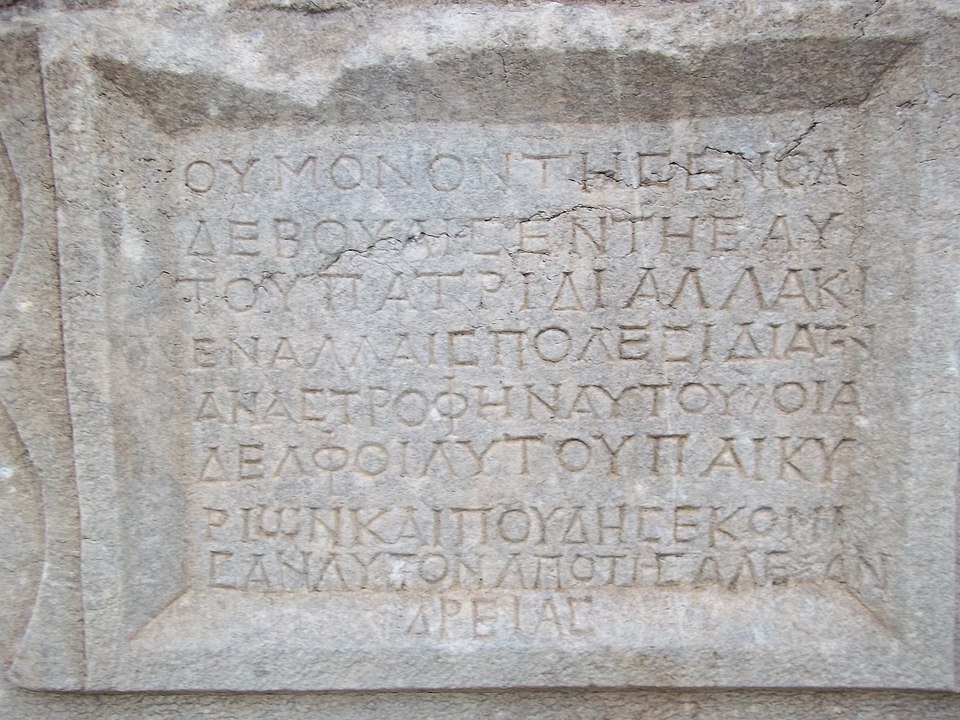
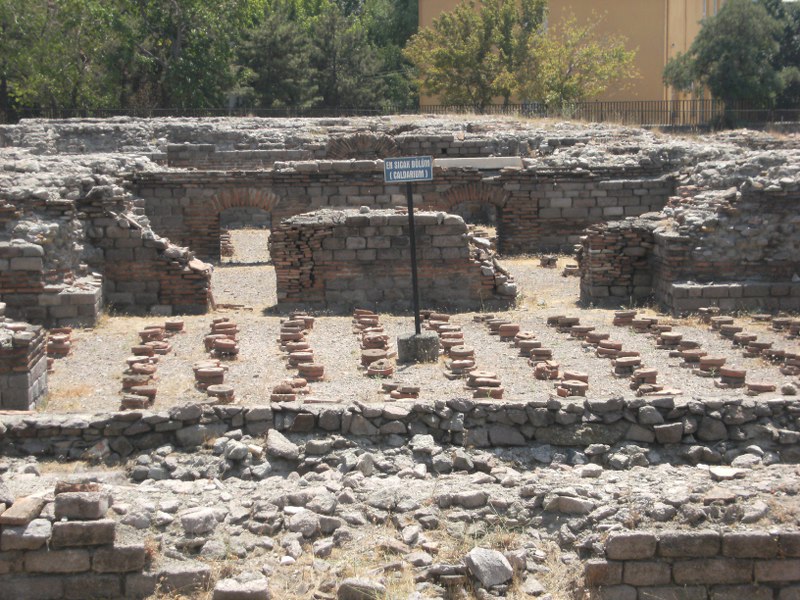
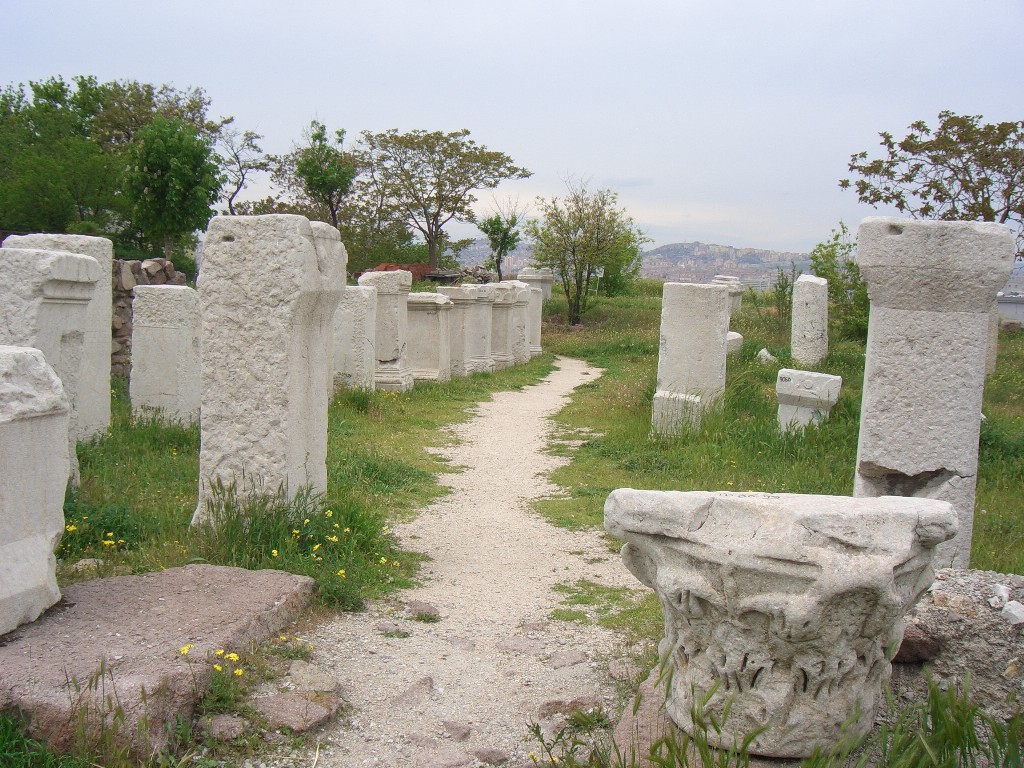
Roman Baths in Ankara: Preserved Examples of Roman Architecture
Located in Turkey’s capital city Ankara are some of the best-preserved examples of Roman architecture in Turkey -the public Roman Baths. Built between AD 211 and AD 217 during Emperor Caracalla’s reign, these baths were once part of a larger complex that included a gymnasium and library.
Visitors can explore various rooms within these baths such as caldarium (hot room), tepidarium (warm room), frigidarium (cold room) as well as admire intricate mosaics on display throughout these rooms.
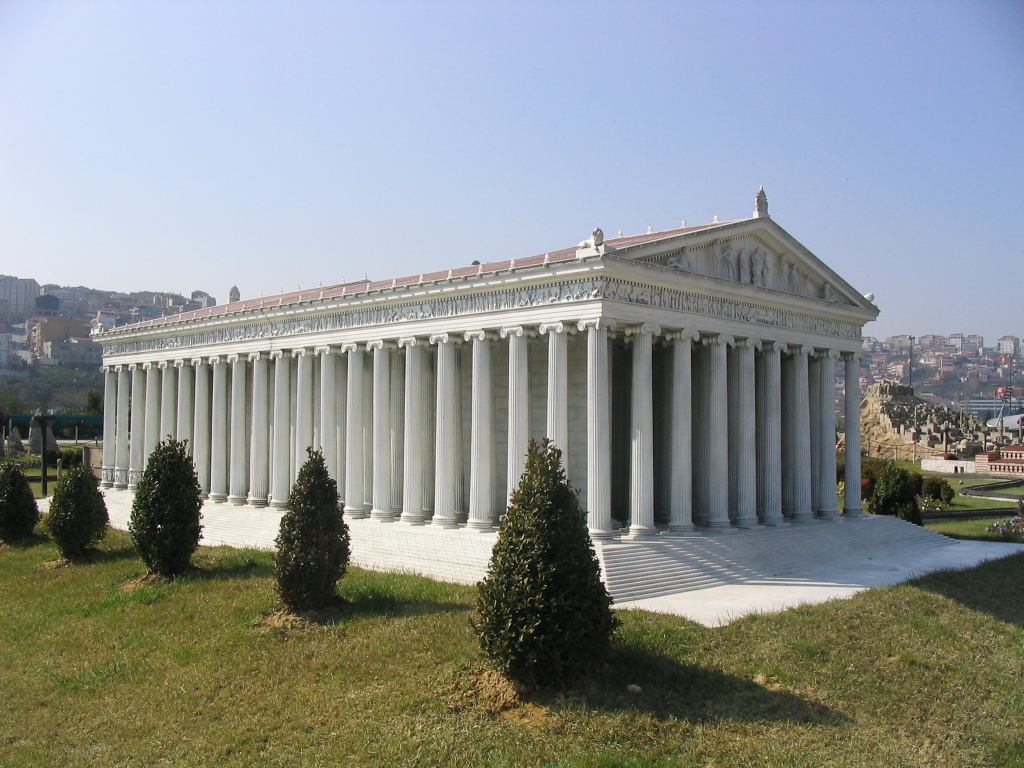
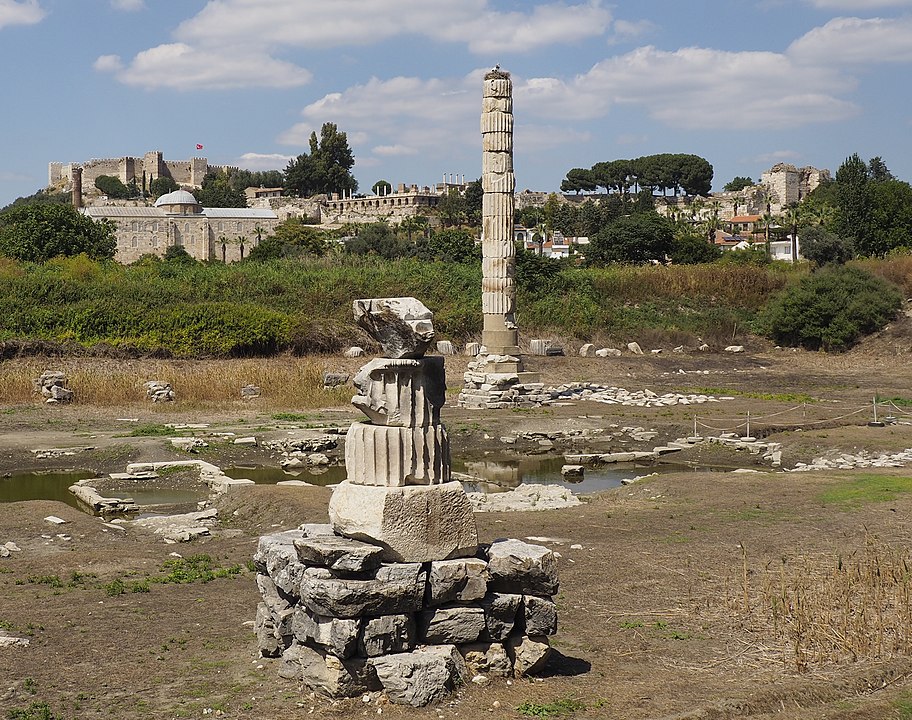
Temple Of Artemis In Ephesus: Largest Temple In Ancient World
The Temple of Artemis in Ephesus was one of the largest temples in the ancient world and is now a popular tourist attraction. Built around 550 BC, this temple was dedicated to the goddess Artemis and featured over 100 marble pillars that stood over 18 meters tall.
Unfortunately, The Temple of Artemis was destroyed by invading armies over time.
Top 10 Historical Places in Turkey You Must Visit
Topkapi Palace: A Must-See Historical Site in Turkey
If you’re planning a trip to Turkey, make sure to include Topkapi Palace on your itinerary. This stunning palace was the primary residence of the Ottoman sultans for nearly 400 years and is now a museum that houses an impressive collection of artifacts from the Ottoman Empire.
The palace is located in Istanbul’s historic district and offers visitors a glimpse into the opulent lifestyle of the Ottoman sultans. The palace complex consists of several buildings, including courtyards, pavilions, and gardens. One of the most impressive features of the palace is its Harem section, which was once home to the Sultan’s family members and concubines.
Visitors can explore various sections of the palace, including the Imperial Treasury, which houses an extensive collection of jewels and precious stones. The Armory section displays an impressive collection of weapons used during battles fought by Ottoman soldiers.
8 Must-See Historical Attractions in Turkey
Topkapi Palace: A Glimpse into Ottoman Royalty
The Topkapi Palace in Istanbul is a must-see attraction for anyone interested in the opulence and grandeur of the Ottoman Empire. This sprawling complex was once the residence of Ottoman sultans for almost 400 years, and it now serves as a museum that showcases some of the most exquisite examples of Ottoman art and architecture.
Visitors to Topkapi can explore its many courtyards, gardens, and pavilions, which were designed to accommodate the sultan’s vast entourage. One of the highlights of any visit is the Harem, where visitors can see how members of the royal family lived behind closed doors. The palace also houses an impressive collection of Islamic calligraphy, ceramics, textiles, and weapons.
Ephesus: A Time Capsule from Antiquity
The ancient city of Ephesus is one of Turkey’s most well-preserved historical sites. Located near the Aegean Sea, this bustling port city was once a center for trade and culture in ancient times. Today, visitors can marvel at its stunning architecture, including the Library of Celsus and the Great Theatre.
One unique aspect of Ephesus is its well-preserved public toilets – a testament to how advanced Roman engineering was even back then! Visitors can also explore several temples dedicated to Greek gods such as Artemis and Dionysus.
Goreme Open-Air Museum: Rock-Cut Churches & Monasteries
Located in Cappadocia – one of Turkey’s most surreal landscapes – Goreme Open-Air Museum is a UNESCO World Heritage Site that features rock-cut churches and monasteries dating back to the 10th century. These structures were carved directly into soft volcanic tuff by early Christian monks who sought refuge from persecution during Byzantine times.
Inside these churches are stunning frescoes depicting scenes from both Old Testament and New Testament, which are still vibrant despite being over a thousand years old. Visitors can also explore the nearby underground cities where early Christians used to hide from invading armies.
Hierapolis-Pamukkale: Soak in Natural Beauty & History
The Hierapolis-Pamukkale hot springs and travertine terraces are a unique natural wonder that have been used as a spa since ancient times. The warm mineral-rich waters are said to have healing properties, making it a popular destination for those seeking relaxation and wellness.
Visitors can bathe in the warm pools while enjoying views of the surrounding landscape, which includes ancient ruins such as the Temple of Apollo and the Necropolis. The white limestone terraces themselves are also a sight to behold – they were formed by calcium carbonate deposits left behind by flowing water over thousands of years.
Other Must-See Historical Attractions in Turkey
While these four attractions are certainly worth visiting, there are many other historical sites in Turkey that offer fascinating insights into its rich history and culture. Some other must-see attractions include:
- The Blue Mosque in Istanbul – one of the most iconic landmarks of the city
- Mount Nemrut – an ancient royal tomb located on top of a mountain
- Ani – an abandoned medieval city near the Turkish-Armenian border
- Troy – the legendary city immortalized by Homer’s Iliad
Whether you’re interested in ancient history or Ottoman architecture, Turkey has something for everyone. With so many historical sites to explore, it’s no wonder that this country has become increasingly popular among tourists seeking cultural immersion and adventure!
Exploring the Past: Historical Places in Turkey
Hagia Sophia: A Must-Visit Attraction in Turkey
Hagia Sophia is one of Turkey’s most famous historical places and a must-visit attraction for tourists. This ancient cathedral-turned-mosque boasts stunning architecture that reflects the history and culture of Istanbul. Originally built as a Christian church, it was later converted into a mosque by the Ottomans and now serves as a museum.
The interior of Hagia Sophia is breathtaking, with its massive dome, intricate mosaics, and marble columns. Visitors can also see the impressive calligraphy on the walls, which is an example of Islamic art at its finest. The building has undergone several renovations over the years, but its original beauty still shines through.
Ephesus: Home to Some of the Best-Preserved Ruins in the World
Located near the Aegean Sea, Ephesus is an ancient city that features some of the best-preserved ruins in the world. Visitors can explore this once-thriving city and see remnants of its past glory, including the Temple of Artemis and Library of Celsus.
The Temple of Artemis was one of the Seven Wonders of the Ancient World and was dedicated to Artemis, goddess of fertility. The Library of Celsus was built in honor of Roman Senator Tiberius Julius Celsus Polemaeanus and served as a monumental tomb for him. Both structures are prime examples of ancient architecture that have stood the test time.
Topkapi Palace: A Museum Showcasing Ottoman Opulence
Topkapi Palace was once home to Ottoman sultans but now serves as a museum showcasing their opulence and grandeur. The palace grounds are vast, featuring multiple courtyards, gardens, fountains, and buildings.
Visitors can explore various sections such as Harem apartments where women lived secluded lives from men or Imperial Treasury where valuable items such as jewels or weapons are exhibited. The palace also has a collection of Islamic art, including ceramics, calligraphy, and textiles.
Pamukkale: A Natural Wonder
Pamukkale is a natural wonder that features terraced hot springs and travertine pools. This unique and breathtaking place attracts visitors from all over the world who come to soak in its mineral-rich waters and admire its beauty.
The name Pamukkale means “cotton castle” in Turkish, which is fitting due to its white calcium deposits that resemble fluffy cotton balls. Visitors can walk on the terraces or take a dip in the thermal pools while enjoying the stunning views of the surrounding landscape.
Top 10 Fascinating Historical Sites in Turkey
Topkapi Palace: A Window to the Ottoman Empire
Once a residence of Ottoman Sultans, Topkapi Palace is now a museum that offers visitors an opportunity to explore the history and culture of the Ottoman Empire. The palace is located in Istanbul and features courtyards, gardens, and rooms filled with treasures from the empire.
Visitors can take a tour of the palace’s Harem section, which was once home to the Sultan’s wives and concubines. The Harem section consists of several rooms, including living quarters, baths, and kitchens. Visitors can also see the Palace Treasury, which houses various artifacts such as jewelry, weapons, and clothing worn by the sultans.
One of the most impressive sections of Topkapi Palace is its Imperial Council Chamber. This chamber was where important decisions were made during the Ottoman Empire. Visitors can see where council members sat during meetings and view historical documents on display.
Ephesus: A Window into Ancient Roman Life
Ephesus was once a bustling port city in ancient Rome. Today it is one of Turkey’s most popular tourist destinations due to its well-preserved ruins. Visitors can see structures such as the Library of Celsus, which held over 12,000 scrolls during ancient times.
Another highlight of Ephesus is its Great Theater. This theater could hold up to 25,000 spectators during performances and events. Visitors can marvel at its size and imagine what life would have been like for those attending events there.
In addition to these famous structures, visitors can also explore other parts of Ephesus such as its public bathhouses and temples dedicated to various gods.
Hagia Sophia: A Symbolic Structure
Originally built as a church in 6th century AD by Emperor Justinian I., Hagia Sophia has served many purposes throughout history including being used as a mosque before becoming a museum today. Its impressive dome is one of the largest in the world and is a testament to Byzantine architecture.
Visitors can see intricate mosaics throughout Hagia Sophia, which depict various religious figures such as Jesus and Mary. Visitors can also explore its upper galleries, which offer stunning views of Istanbul.
Cappadocia: A Unique Landscape
Known for its unique landscape of fairy chimneys and cave dwellings, Cappadocia is home to several ancient underground cities that were used for protection during times of war. Visitors can explore these fascinating structures and learn about their history.
One of the most popular activities in Cappadocia is taking a hot air balloon ride over the region’s unique landscape. This experience offers breathtaking views of the fairy chimneys and surrounding valleys.
In addition to exploring underground cities, visitors can also hike through Cappadocia’s valleys where they will see ancient rock-cut churches and monasteries carved into cliffsides.
25 Famous Landmarks in Turkey: Historical and Natural
Ottoman Architecture: A Prominent Feature in Turkey’s Historical Sites
Mardin is a city located in southeastern Turkey that is known for its well-preserved Ottoman architecture. The city boasts of beautiful houses and buildings made from limestone, which gives them a unique character. Mardin’s old town is a maze of narrow streets, where visitors can explore the city’s history and culture. The city also has many mosques that reflect the influence of the Ottoman Empire in Turkey’s past.
Another famous historical site in Turkey is the Hagia Sophia, located in Istanbul. This former church and mosque features stunning Byzantine architecture that attracts millions of tourists every year. The building was converted into a museum in 1935 and was recently turned back into a mosque by the Turkish government.
The Temple of Nemrut is another must-visit site for tourists interested in exploring Turkey’s rich history. Located on top of Mount Nemrut, it features giant statues depicting gods and kings from ancient times. The temple offers breathtaking views of the surrounding mountains and valleys.
Natural Wonders: Landmarks That Showcase Turkey’s Beauty
Turkey is not just home to impressive historical sites but also boasts many natural wonders worth visiting. One such place is Pamukkale, which means “cotton castle” in Turkish. It is a natural hot spring that creates terraced pools filled with mineral-rich water that cascades down white limestone cliffs.
The Tahtali Mountain offers another breathtaking view as it rises up to 2,365 meters above sea level. Visitors can take a cable car ride to the summit or hike up to enjoy panoramic views of Antalya coastline.
If you’re looking for something more adventurous, head over to Cappadocia, where you’ll find rock formations shaped like cones, mushrooms, and even animals! Visitors can explore these unique rock formations by hiking or taking hot air balloon rides over them.
The 10 Best Historic Sites in Turkey
Ephesus: A City of Ancient Wonders
Ephesus is one of the most famous historical sites in Turkey and was once a bustling port city. The ruins of Ephesus are located near the town of Selcuk and are home to some of the best-preserved ancient Roman architecture in the world. Visitors can explore the Temple of Artemis, which was once considered one of the Seven Wonders of the World, as well as the Library of Celsus, an impressive two-story structure that still stands today.
Hagia Sophia: A Masterpiece of Byzantine Architecture
Hagia Sophia is a masterpiece of Byzantine architecture and is considered one of Istanbul’s most iconic landmarks. Originally built as a church in 537 AD, it later became a mosque before being converted into a museum in 1935. Visitors can marvel at its massive dome, intricate mosaics, and stunning marble floors.
Pamukkale: A Natural Wonder
Pamukkale is a natural wonder located in southwestern Turkey that features terraced hot springs and travertine pools filled with crystal clear water. The site has been used for thousands of years as a spa by people seeking its healing properties. Visitors can also explore nearby ancient Roman ruins such as Hierapolis.
Cappadocia: A Land Like No Other
Cappadocia is a unique region located in central Turkey known for its unusual rock formations and cave dwellings carved into soft volcanic tuff. Visitors can take hot air balloon rides over the fairy chimneys or explore underground cities like Derinkuyu that were used by early Christians to escape persecution.
Troy: A Legendary City
Troy is an ancient city located on Turkey’s northwest coast that was made famous by Homer’s epic poem The Iliad. Today visitors can see the ruins of Troy’s walls, gates, and towers, as well as the reconstructed Trojan Horse that was used in the 2004 movie Troy.
Ani: A Forgotten City
Ani is a forgotten city located on Turkey’s eastern border with Armenia. Once a thriving metropolis with over 100,000 residents, Ani is now a ghost town filled with crumbling churches and abandoned buildings. Visitors can explore the ruins of Ani’s cathedral, palace, and fortress while taking in stunning views of the surrounding landscape.
Perge: A Roman Gem
Perge is an ancient Roman city located near Antalya on Turkey’s southern coast. The site features impressive ruins such as a theater, stadium, and bathhouse that are still remarkably intact despite being over 2,000 years old.
Mount Nemrut: A Monument to Hubris
Mount Nemrut is an imposing mountain peak located in southeastern Turkey that was once home to a massive tomb built by King Antiochus I Theos of Commagene. The tomb featured massive statues of gods and kings that were meant to demonstrate Antiochus’ power and authority. Visitors can hike up to the summit to see these impressive sculptures up close.
Göbekli Tepe: The Oldest Temple in the World
Göbekli Tepe is an archaeological site located in southeastern Turkey that dates back over 11,000 years. It features massive stone pillars arranged in circles that are believed to be part of what may be the oldest temple ever discovered. Visitors can marvel at these ancient structures while learning about their significance from knowledgeable guides.
Sumela Monastery: A Hidden Gem
Sumela Monastery is a hidden gem located deep in the forests of northeastern Turkey. Built into a cliff face overlooking a beautiful valley below, Sumela Monastery was once home to Greek Orthodox monks who lived there for centuries before being forced to leave during World War I. Today visitors can explore this stunning site and take in the breathtaking views of the surrounding landscape.
10 Iconic Historical Attractions in Turkey: Places to Explore
Cappadocia: A Land of Unique Rock Formations and Underground Cities
Cappadocia is one of the most iconic landmarks in Turkey, famous for its unique rock formations and underground cities. The region’s fairy chimneys are cone-shaped rock formations that have been carved out by wind and water erosion over millions of years. These structures are a popular attraction among tourists, who come to marvel at their unusual shapes and colors.
In addition to the fairy chimneys, Cappadocia is also home to several underground cities that date back to the Hittite period. These cities were built as a way to protect inhabitants from invaders and natural disasters, and they feature intricate networks of tunnels, rooms, and ventilation systems. Visitors can explore these underground cities on guided tours, which offer a fascinating glimpse into Turkey’s ancient history.
Galata Tower: Panoramic Views of Istanbul
The Galata Tower is one of Istanbul’s most recognizable landmarks, offering panoramic views of the city from its observation deck. Built in 1348 by the Genoese colony that controlled Constantinople at the time, this medieval tower has served as a watchtower, lighthouse, and prison throughout its history.
Today, visitors can take an elevator or climb up the tower’s spiral staircase to reach the observation deck at the top. From here, you can enjoy stunning views of Istanbul’s skyline and landmarks like the Bosphorus Bridge and Hagia Sophia.
House of the Virgin Mary: A Sacred Site for Christians and Muslims
The House of the Virgin Mary is located near Ephesus in western Turkey and is believed to be where Mary spent her final years before ascending into heaven. This sacred site is revered by both Christians and Muslims alike and attracts thousands of pilgrims each year.
According to legend, St. John brought Mary to this house after Jesus’ crucifixion so she could live out her remaining days in peace. Today, visitors can explore the house and its surrounding gardens, which are said to have healing properties.
Manavgat Waterfall: A Natural Wonder
The Manavgat Waterfall is located near the town of Manavgat in southern Turkey and is a popular attraction among tourists. This natural wonder features a 10-meter-high waterfall that cascades down into a pool below, surrounded by lush greenery and wildlife.
Visitors can swim in the pool or take a boat ride to get closer to the waterfall. There are also several restaurants and cafes nearby where you can enjoy traditional Turkish cuisine while taking in the stunning views.
Sumela Monastery: A Hidden Gem in Trabzon
The Sumela Monastery is located on a steep cliff overlooking Altindere Valley in Trabzon province. This ancient monastery was built by Greek monks in the 4th century AD and served as an important religious center for centuries.
Today, visitors can explore the monastery’s ruins and admire its intricate frescoes and carvings. The site also offers stunning views of Altindere Valley below, making it one of Turkey’s hidden gems.
Best Historical Places in Turkey with Video
Turkey has a wealth of historical sites that are recognized for their outstanding universal value and cultural significance. With 18 sites listed on the UNESCO World Heritage List, Turkey is one of the top 10 countries with the most number of sites. In this section, we’ll explore some of the best historical places in Turkey and provide you with a video tour.
Ancient City of Troy
The ancient city of Troy is located in northwestern Turkey and is known for its legendary Trojan War. The site was first excavated by Heinrich Schliemann in the late 19th century, revealing several layers of civilizations dating back to around 3000 BC. Today, visitors can explore the ruins and see remnants of ancient walls, temples, and houses.
Historic Areas of Istanbul
Istanbul, formerly known as Constantinople, was once the capital city of both the Byzantine and Ottoman empires. The historic areas of Istanbul include several landmarks such as the Hagia Sophia, Blue Mosque, Topkapi Palace Museum, and Grand Bazaar. Visitors can immerse themselves in Istanbul’s rich history by exploring these iconic landmarks.
Göreme National Park and Rock Sites of Cappadocia
Located in central Turkey, Göreme National Park features unique landscapes shaped by volcanic eruptions millions of years ago. Visitors can see fairy chimneys (tall cone-shaped rock formations), rock-cut churches adorned with frescoes from the Byzantine era, and underground cities where early Christians sought refuge from persecution.
Ephesus Archaeological Site
Ephesus was an ancient Greek city located on the coast of present-day Turkey. It was one of the largest cities in Roman Asia Minor during its prime and served as a major center for trade and commerce. Today, visitors can see well-preserved ruins such as the Library of Celsus, Great Theater, Temple of Hadrian, and much more.
Pergamon and Its Multi-Layered Cultural Landscape
Pergamon was once a major center of culture, education, and medicine in the ancient world. The city was known for its impressive library (second only to Alexandria’s) and its famous healing center, the Asclepion. Today, visitors can see ruins such as the Acropolis, Temple of Athena, and the Altar of Zeus.
Discovering the Rich Tapestry of Historical Sites in Turkey
From the ancient ruins of Ephesus to the stunning Hagia Sophia, Turkey is a country steeped in history and culture. With so many historical sites to explore, it can be overwhelming to decide where to start. But fear not, as we have compiled a list of some of the best historical sites that Turkey has to offer.
One cannot talk about historical sites in Turkey without mentioning the Topkapi Palace Museum. This sprawling palace was once home to Ottoman sultans and boasts an impressive collection of artifacts and treasures from throughout Turkish history. Visitors can wander through its ornate courtyards and admire its opulent interiors.
Another must-see site is the ancient city of Troy. Made famous by Homer’s epic poem The Iliad, Troy is one of the most significant archaeological sites in all of Turkey. Visitors can explore its ruins and imagine what life was like during the Trojan War.
For those interested in religious history, a visit to Konya is a must. This city was once home to Rumi, one of Islam’s most revered poets and scholars. His mausoleum, located within the Mevlana Museum complex, is a beautiful example of Islamic architecture.
But historical sites in Turkey are not just limited to ancient ruins and palaces. The country also has a rich cultural heritage that can be seen in its traditional villages and towns. One such place is Safranbolu, located in northern Turkey. Its well-preserved Ottoman-era houses are a testament to the country’s architectural legacy.
Of course, no trip to Turkey would be complete without visiting Istanbul’s Hagia Sophia. This iconic building has served as both a church and mosque throughout its long history and is now open as a museum for visitors to marvel at its stunning mosaics and awe-inspiring dome.
These are just a few examples of the many historical sites that Turkey has to offer. Whether you are interested in ancient ruins, religious history, or cultural heritage, there is something for everyone in this fascinating country. So pack your bags and prepare to discover the rich tapestry of historical sites that Turkey has to offer.
FAQs
– Topkapi Palace, Istanbul
– Hagia Sophia, Istanbul
– Ancient City of Ephesus
– Cappadocia’s unique rock formations and underground cities
– Ancient City of Troy
Topkapi Palace is a sprawling complex that served as the residence of Ottoman sultans for almost 400 years. Visitors can explore its courtyards, pavilions, and gardens. Highlights include the Harem section, the Imperial Treasury with its collection of jewels and precious stones, and the Armory section showcasing an impressive array of weapons.
Ephesus was once a bustling port city and is now one of Turkey’s most significant archaeological sites. Visitors can explore well-preserved ruins such as the Library of Celsus, the Great Theater, and the Temple of Artemis.
Cappadocia is famous for its unusual rock formations known as “fairy chimneys,” and its many underground cities that were once used by early Christians to hide from persecution. One of the unique experiences in the region is a hot air balloon ride, which offers a breathtaking view of the landscape.
Beyond exploring the historical sites, Turkey offers a range of relaxing experiences suitable for couples. Some recommendations include enjoying an Istanbul cruise dinner, visiting some of Turkey’s top thermal spas, and taking a hot air balloon ride in Cappadocia.
One Comment